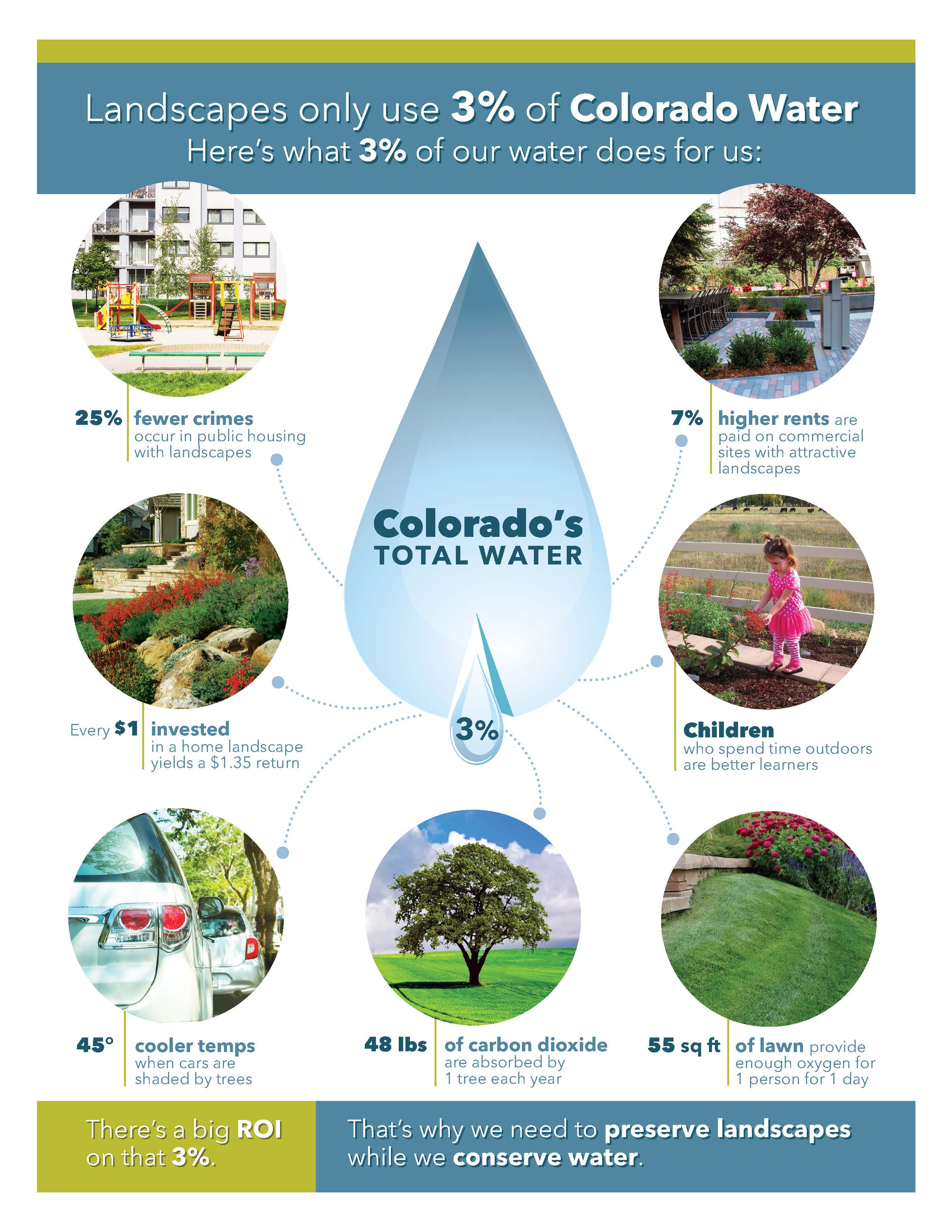
Landscapes offer big benefits to Colorado proprieties, CSU study says
Colorado State University’s study The Hidden Value of Landscapes: Implications for Drought Planning is the first study of its kind to quantify how landscapes boost real estate values and decrease urban crime in Colorado. In addition, this new research explores how these open spaces also offer tangible community, health and environmental benefits. Many of these advantages have already been known from anecdotal evidence, but this is the first time they have been officially synthesized and analyzed.
The study was led by Tony Koski; professor and Extension Turf Specialist in CSU’s Department of Horticulture and Landscape Architecture; Zach Johnson, associate professor in the Department of Horticulture and Landscape Architecture; and Alison O’Connor, a horticulture agent with CSU Extension in Larimer County.
The research team’s findings prove the importance of landscaping to both commercial and residential curb appeal and property values. “High” to “excellent” quality landscaping is estimated to increase curb appeal by 17 percent, rental rates for commercial properties by seven percent and general property values as much as ten percent. Results similarly showed that every dollar invested in a residential landscape can yield as much as $1.35 (135%) in return. Street trees can also add significant (3-15%) and value to homes and rental properties, and homes immediately adjacent to parks and open spaces are 8-20% higher than comparable properties one-half mile away.
In addition to these economic benefits, landscapes also offer urban communities significant safety and physical and psychological benefits. The team’s research found that the greener a building’s surroundings are, the fewer total property and violent crimes occur. Public housing residents reported 25% fewer domestic crimes when landscapes and trees were planted near their homes. Similarly, a study of individuals living in 28 identical high-rise apartment units found that residents living near green spaces had a stronger sense of community, coped better with stress and hardship and were less aggressive and violent than those further away. In general, landscaping and open spaces also encouraged exercise, increased physical fitness (lower BMI) and relieved stress/depression in as many as 95% of study participants.
Landscaping also offers some important environmental benefits, especially to urban areas like the Denver metro area. Lawns and planting beds help improve air quality, reduce urban temperatures, mitigate flooding and filter pollutants from stormwater, and provide wildlife (including important pollinators) a place to live. Trees in urban areas significantly improve atmospheric air quality; One tree alone can absorb as much as 48 pounds of carbon dioxide each year and provide enough oxygen to support two human beings. The economic saving from these benefits is tremendous—$1.7 million for Denver’s metro area alone. Trees also provides important air cooling and moisture, reducing temperatures inside cars up to 45 degrees Fahrenheit. In addition, lawns and planting beds mitigate flooding and filter pollutants from stormwater and urban open spaces provide wildlife (including important pollinators) a place to live.
Together, these benefits reveal the incredible value of our state’s landscaped spaces. They actually come, however, at fairly small environmental price. The recently-completed Colorado Water Plan shows that when combined, all Colorado landscapes—including both residential and commercial landscapes as well as parks, sports complexes, golf courses, etc.—use only around 3% of all water consumed in Colorado. This small water investment offers our state a tremendous return well worth this allocation of water resources. While it can be easy to argue that irrigating landscapes is not the best use of water, there are serious, long-term losses when urban landscapes and parks are targeted. The unintended consequences from the ‘cash for grass’ buyouts in Nevada and California resulted in trees and other plants dying and succumbing to disease when deprived of regular irrigation. This doesn’t mean that Colorado shouldn’t conserve water used for landscapes as it must for other uses, but it does suggest that conservation of landscape water should be thoughtful, with an aim to preserve our landscaped spaces.
This study urges elected officials, water providers, landscape managers and property owners to implement proactive drought policies and continue proven best practices for water conservation. These kinds of practices have enabled Colorado to reduce its water consumption by just under 20 percent in the last decade. By further implementing methods that prioritize water for irreplaceable trees and large shrubs as well as important parks and recreational areas, we can continue to conserve water while protecting our landscapes and the tremendous commercial, community and environmental benefits they provide.
This study was commissioned by the Associated Landscape Contractors of Colorado and conducted independently by the CSU research team. For more information, the full research report can be found here.



